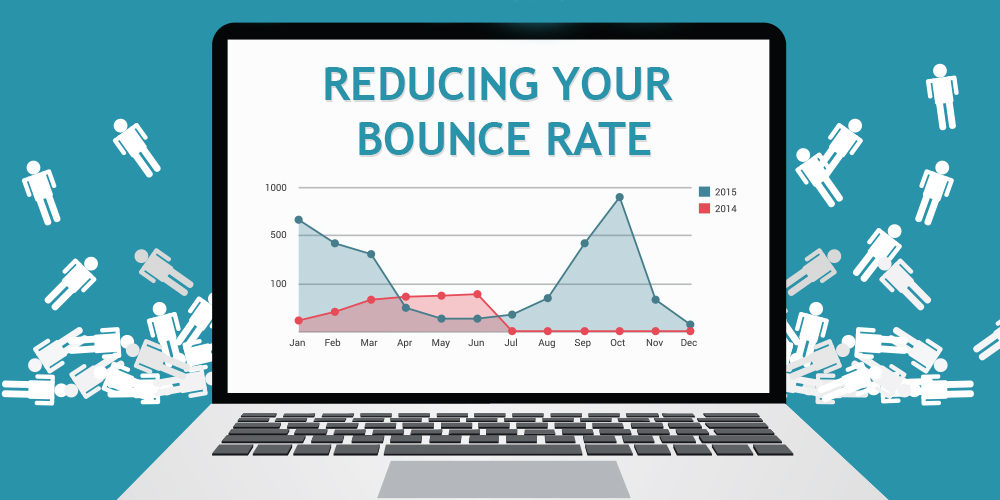Table of Contents
Let’s be real—checking your website stats and seeing a high bounce rate feels like a punch to the gut.
You put in the work. You write great content, optimize for SEO, maybe even run some ads. People are landing on your site… and then? They leave. No clicks. No scrolls. Just a quick hello and goodbye.
Frustrating, right?
But here’s the good news: you’re not alone, and you can absolutely fix it. In fact, with a few smart tweaks, you can reduce bounce rate and get people to stick around long enough to see what you’re all about.
Let’s dive into it—no jargon, no fluff, just the stuff that works.
First Off, What Is Bounce Rate?
Okay, quick breakdown. Bounce rate is the percentage of people who land on your site and leave without doing anything else.
Imagine someone walking into your shop, glancing around, and immediately walking out. That’s a bounce.
It doesn’t always mean something’s wrong—maybe they got the info they needed. But if your bounce rate stays high for too long, it usually means something’s not quite right.
- Your page doesn’t match what they were looking for.
- The design or content isn’t engaging.
- The site’s slow or hard to use.
In short, it’s your site’s way of telling you, “Hey, something’s not clicking here.”
Why You Should Actually Care About It
Let’s be honest—bounce rate isn’t the only metric that matters. But it can tell you a lot about how people experience your site.
If visitors are bouncing fast, they’re not signing up, not buying, not reading. And that means your hard-earned traffic is going to waste.
Fixing that? That’s where learning how to reduce bounce rate really pays off.
11 Easy Ways to Reduce Bounce Rate (No Tricks, Just Real Tips)
Ready to fix it? Here are some simple, no-nonsense tips that actually work.
1. Speed It Up
You’ve heard it before, and you’re about to hear it again: if your website is slow, people will leave. Period.
What to do:
Compress your images, get rid of bloated plugins, and use tools like Google PageSpeed Insights to see where you’re lagging. Hosting matters too—cheap hosting often equals slow loading.
Speeding up your site is one of the quickest ways to keep visitors around.
2. Stop the Clickbait
If your headline promises something amazing but your page doesn’t deliver, people bounce. Fast.
What to do:
Make sure your title and meta description accurately reflect what’s on the page. Be helpful, not hype-y.
When people get what they came for, they stay longer—and you reduce bounce rate without doing anything fancy.
3. Make Your Site Mobile-Friendly
Chances are, most of your visitors are browsing on their phones. If your site’s hard to read or navigate on mobile, they’re gone.
What to do:
Use a responsive design. Make text easy to read. Ensure buttons and links are tappable.
A mobile-friendly experience helps you reduce bounce rate and makes your site feel modern and usable.
4. Break Up the Text
People don’t read websites like books. They scan. Nobody wants to read a huge block of text—they’ll bounce fast.
What to do:
Use short paragraphs, subheadings, bullet points, and relevant images. Think skimmable, not scholarly.
Readable content = longer sessions = reduced bounce rate.
5. Use Internal Links (The Right Way)
Sometimes people bounce just because they don’t know where to go next.
What to do:
Add internal links to related articles, services, or product pages. Don’t force it—just make it easy for readers to explore more.
Guiding people through your site is a gentle way to reduce bounce rate and improve time-on-site.
6. Make Your CTAs Clear (Not Confusing)
“Click here” doesn’t cut it anymore. Visitors need to know what they’re getting into.
What to do:
Use action-driven, benefit-focused CTAs like “Download the Free Checklist” or “Book Your Free Call.”
A strong call-to-action keeps people engaged—and helps you reduce bounce rate by encouraging interaction.
7. Give People What They’re Actually Looking For
If someone’s searching for “best hiking backpacks,” and you give them a blog about camping recipes… they’re not sticking around.
What to do:
Make sure your content matches search intent. Know what your readers want, and deliver it quickly.
The better you match intent, the more you reduce bounce rate without even trying.
8. Add Useful Visuals
Images and videos keep people on the page—but only if they add value.
What to do:
Include infographics, screenshots, charts, or short explainer videos. Avoid giant stock images just for decoration.
Relevant visuals make your content easier to understand—and more fun. That’s a win for engagement and a big win to reduce bounce rate.
9. Cut Down on Pop-Ups
We get it—pop-ups can work. But they can also send people running for the back button.
What to do:
Use them sparingly. Try exit-intent pop-ups instead of hitting people the moment they land on your site.
Less interruption = better experience = lower bounce rate.
11. Keep Your Content Fresh
If your blog is packed with outdated info, broken links, and 2016 design vibes… people notice.
What to do:
Update your top pages regularly. Update your stats, fix any broken links, and clean up the wording. Evergreen content still needs love.
A fresh, trustworthy page is more engaging—and yes, it’ll help reduce bounce rate too.
What’s a “Good” Bounce Rate Anyway?
It depends. Every site is different, but here’s a ballpark:
- Blogs: 70–90%
- E-commerce: 20–40%
- B2B sites: 30–60%
- Landing pages: 60–80%
Rather than chasing a perfect number, focus on improving your own baseline. If your bounce rate is 85% today, try getting it down to 75% next month. Progress beats perfection.
Final Thoughts: It’s About Creating a Better Experience
The best way to reduce bounce rate? Make your website better for people.
Not for bots, not for algorithms—for real humans.
Make it faster, easier to read, more helpful, and more enjoyable. Be clear, be useful, and respect your visitors’ time.
When you do that, they’ll stay longer. Click more. Trust you more. And that’s when your website starts actually working for you.
Bounce rate down, conversions up. That’s the goal.

